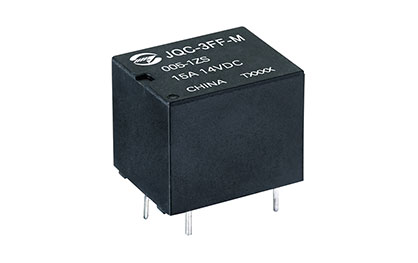
Using a relay for your car horn can provide several benefits, including improved reliability and consistency of horn operation, protection of the horn button and wiring from damage, and the ability to use a more powerful horn without risking damage to the electrical system. Additionally, using a relay can help prevent safety hazards and reduce the risk of electrical issues in your vehicle.

Here are the basic steps for installing a car horn relay:
1. Choose the appropriate relay: Make sure to choose a relay that is compatible with your car's electrical system and the voltage and amperage requirements of your horn. You can consult your car's owner manual or a service manual to determine the specifications.
Locate the horn wiring: The horn wiring is usually located near the steering wheel or under the hood, and consists of a positive wire that connects to the horn button, and a negative wire that connects to the car's chassis.
2. Disconnect the horn wiring: Disconnect the positive wire from the horn button, and the negative wire from the car's chassis.
3. Connect the relay: Connect the positive wire from the horn button to the "control" terminal of the relay. Connect the negative wire from the car's chassis to the "ground" terminal of the relay. Connect the positive wire from the horn to the "power" terminal of the relay. Connect a new wire from the "output" terminal of the relay to the positive wire on the horn.
4. Secure the wiring: Make sure to secure all of the wiring with cable ties or electrical tape to prevent it from coming loose or getting damaged.
5. Test the horn: Turn on the car's ignition and press the horn button to test the horn. The relay should allow the current to flow from the power source to the horn, resulting in a loud, clear sound.

Voltage and current rating: The relay should match the voltage and current requirements of your horn. Check the specifications of your horn to ensure that the relay can handle the required voltage and current.
Contact type: There are two types of relay contacts, normally open (NO) and normally closed (NC). A normally open relay contact is used when the circuit is open when the relay is not energized. A normally closed contact is used when the circuit is closed when the relay is not energized. For a car horn, a normally open contact is typically used.
Coil voltage: The relay should match the voltage of your car's electrical system. Most car electrical systems use a 12-volt system, but some cars may use a 24-volt system.
Mounting style: There are different mounting styles for relays, such as panel mount, socket mount, and PCB mount. Choose a mounting style that works with your installation requirements.
Brand and quality: It is important to choose a reliable and reputable brand when selecting a relay for your car horn. Quality relays will provide more reliable performance and longevity.
Application: Make sure that the relay is specifically designed for automotive use and intended for use with a car horn.
Email:
lilian@zettlernb.comCall Us:
+86-574-62502203Address:
No. 5, Shuntai Road, Yangming Industrial Zone, Yuyao City, Zhejiang Province